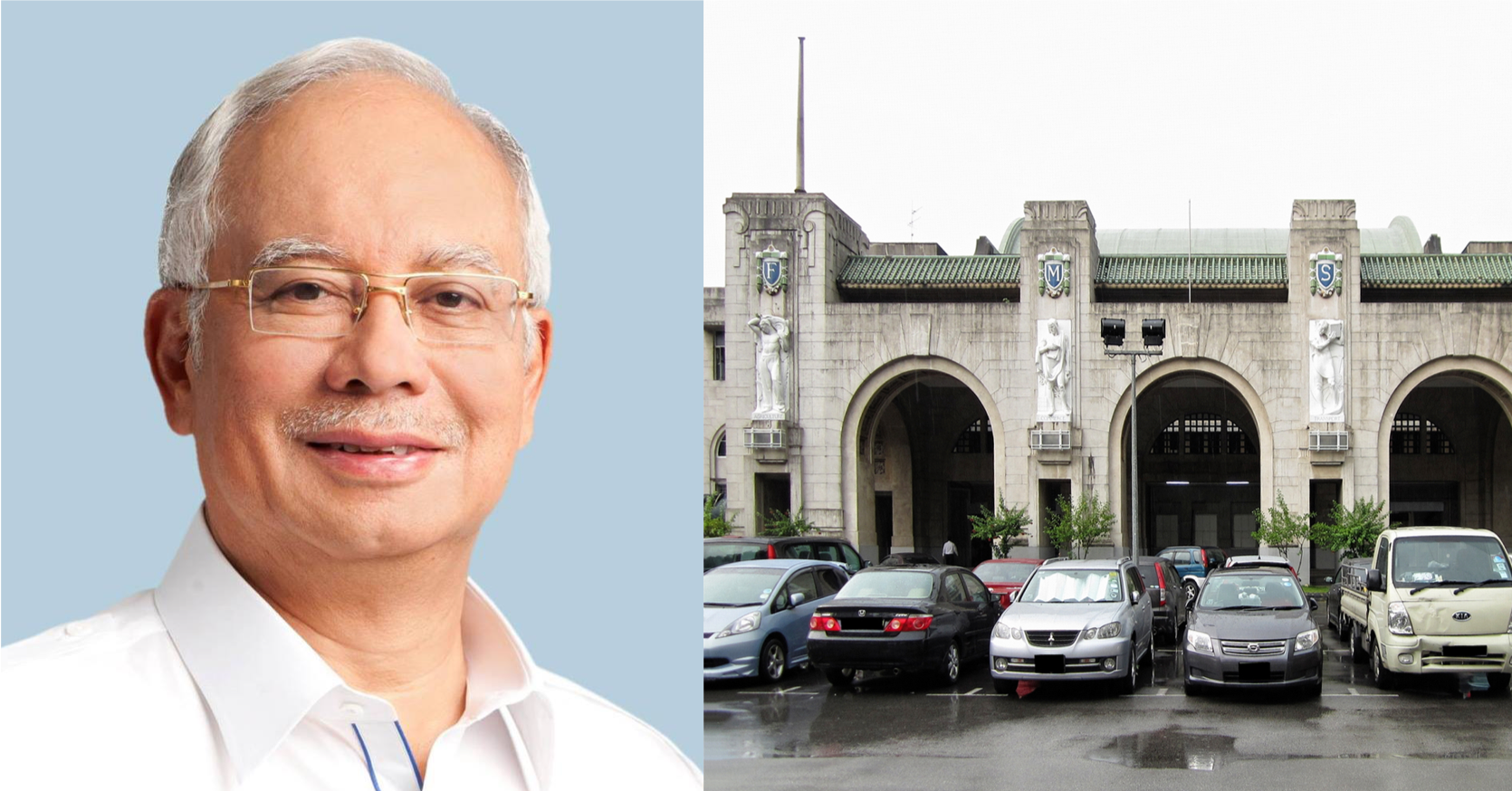Former Malaysian Prime Minister Najib Razak has taken to social media to appeal to public opinion among Malaysians and defend his record over the 2010/ 2011 railway land deal that he struck with Singapore.
In case the facts have slipped your memory, here's what went down.
The problem first began, as it often does, with the British colonial regime:
1918 transfer of land
Way back in 1918, before independent Singapore or Malaysia was a thing, the British colonial government handed over control of more than 200 hectares of land in Singapore to the Federated Malay States Railway (FMSR).
After World War II, management of the FMSR was transferred to Keretapi Tanah Melayu (Malayan Railways or KTM).
1990 Points of Agreement
Back in 1990, then-PM Lee Kuan Yew signed a deal called the Points of Agreement (POA) together with then-Malaysian Finance Minister Daim Zainuddin on the railway land issue.
This meant that Malaysia was supposed to vacate the Tanjong Pagar Railway Station in exchange for three parcels of land in Tanjong Pagar, Kranji and Woodlands.
Malaysia and Singapore would jointly develop the land and own 60 per cent to 40 per cent respectively.
However, the implementation of the deal did not work out under then-PM Mahathir Mohamad.
2010 talks between Najib and PM Lee
In 2010, then-PM Najib Razak tried to tackle the issue, this time with PM Lee Hsien Loong sitting across the table.
Talks were successful, and Malaysia agreed to have KTM vacate Tanjong Pagar Railway Station, and shift its operations to Woodlands Train Checkpoint.
In return for vacating parcels of land at Tanjong Pagar, Kranji, and Woodlands, and three more parcels of land in Bukit Timah, Singapore would exchange six land parcels in Marina South and Ophir-Rochor.
These land parcels would be developed jointly by Malaysia and Singapore by a joint-venture company M+S Pte Ltd, which was 60 per cent owned by Malaysia's Khazanah Nasional and 40 per cent by Singapore's Temasek Holdings.
2014 court case
Now, Singapore wanted Malaysia to pay development costs for the parcels of land, due to the change in land value from the approval of high-value development projects.
Malaysia agreed to pay up for Bukit Timah, as it was not covered under the POA.
However, they did not agree to pay charges for Kranji, Tanjong Pagar and Woodlands.
Both sides agreed to submit to the Permanent Court of Arbitration at the Hague.
Singapore sought development charges of S$1.47 billion. In October 2014, a three-man Arbitral Tribunal ruled that Malaysia did not need to pay Singapore anything.
Najib has his say
Mahathir has previously expressed his unhappiness at Najib's deal with Singapore -- and Najib has come under criticism from his political opponents.
But on March 4, Najib hit out at his critics in a lengthy Facebook post.
He makes the following claims:
Mahathir's government failed to seal the 1990 deal
- The original agreement to cease operations at KTM's Tanjong Pagar Railway Station and return railway land to Singapore was negotiated by Mahathir's government in 1990, and signed by Daim Zainuddin.
- After the agreement was signed, Mahathir's government did not honour the deal, and instead asked for an additional three parcels of land at Bukit Timah.
- Singapore agreed to this, but Mahathir did not proceed with the deal due to other disputes he had with Singapore at the time.
The land
- Under the 1918 Railways Act, which gave KTM the land in the first place, it was held by a 999-year leasehold and could only be used for railway purposes.
- As the land parcels could not be put to other purposes, they sat idle for 20 years, not earning money for the Malaysian government.
- In fact, they were loss-makers, as Malaysia had to pay annual land tax to Singapore.
The deal
- The land that Najib negotiated in exchange at Marina South and Ophir-Rochor were far more valuable than the parcels elsewhere.
- The projects at these parcels were successfully completed in early 2018, and are worth billions today.
- They have been earning money for Malaysia, instead of lying idle like the railway land had been for 20 years from 1990 to 2010.
- Najib disagreed over paying development charges for some of the land parcels, and agreed to go to court.
- He was successful and saved S$1.47 billion for Malaysia.
In order to illustrate his point, the former PM shared a link to a Mothership article from 2014, which reported the outcome of the court case.
He concluded by saying that he had done his best to solve this long-running legacy issue while he was PM, but the current Pakatan Harapan (PH) government has "slandered" him and accused him of committing "treason" with his deal.
Discussed this issue before
Najib's arguments appear very similar to the ones he made in December 2018, talking about the same issue.
It's possible he repeated them for this post.
But Najib has reason to smile.
His coalition recently won a by-election in Semenyih, Selangor, defeating the PH candidate.
And he is no stranger to using social media to gain support from the public.
You can read his Facebook post below, in Malay:
Related stories:
Top image from Najib Razak's Facebook page and Wikimedia Commons via EquatorialSky2 and Magenta Green.
If you like what you read, follow us on Facebook, Instagram, Twitter and Telegram to get the latest updates.

